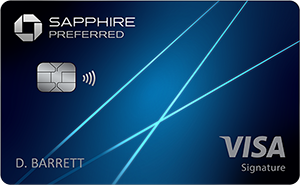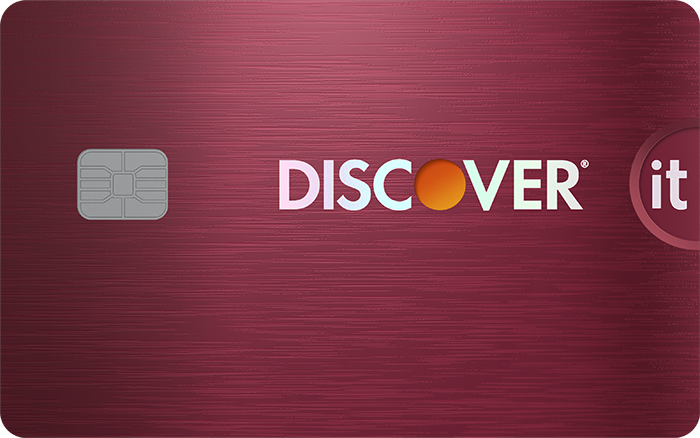The higher your credit card limit, the more you can spend, and the more debt you can take on without hurting your credit score. A credit card credit limit is the maximum you can spend with a card, and your card issuer raises it when they determine you've become more trustworthy.
But there's more to your credit limit than meets the eye. You can have a lower credit limit and a better credit score than the average American. Below, we'll dive deeper into how your credit limit compares to the average person your age.
What is the average credit card limit?
It's more useful to measure the average American's credit limit by age group, so you can compare your limit to others like you. Here's a look at how each generation fared in Experian's 2022 consumer debt report (ages in parenthesis):
- Silent generation (77+): $32,379
- Baby boomers (58-76): $40,318
- Generation X (42-57): $35,994
- Millennials (26-41): $24,668
- Generation Z (18-25): $11,290
Generally, the average credit limit goes up with age. Baby boomers have the highest overall credit limits, and Gen Zers have the lowest. That's expected. Credit issuers typically start new credit card users with low limits, then bump these up as users prove themselves trustworthy.
The one exception is the dip from the second-oldest to the oldest generation of credit card users. This could be due to retirement, which typically lowers one's income. Credit card issuers consider income strongly when determining credit limits.
Credit card comparison
We recommend comparing options to ensure the card you're selecting is the best fit for you. To make your search easier, here's a short list of standout credit cards.
| Offer | Our Rating | Welcome Offer | Rewards Program | APR | Learn More |
|---|---|---|---|---|---|

Apply Now for Bank of America® Unlimited Cash Rewards credit card
On Bank of America's Secure Website. |
Rating image, 4.50 out of 5 stars.
4.50/5
Our ratings are based on a 5 star scale.
5 stars equals Best.
4 stars equals Excellent.
3 stars equals Good.
2 stars equals Fair.
1 star equals Poor.
We want your money to work harder for you. Which is why our ratings are biased toward offers that deliver versatility while cutting out-of-pocket costs.
|
$200 cash rewards $200 online cash rewards bonus after you make at least $1,000 in purchases in the first 90 days of account opening | 1.5% cash back |
Intro: 0% Intro APR for 15 billing cycles for purchases. 0% Intro APR for 15 billing cycles for any balance transfers made in the first 60 days. After the intro APR offer ends, 18.24% - 28.24% Variable APR on purchases and balance transfers will apply. Balance transfers include a fee of 3% for 60 days from account opening, then 4%. Purchases: 0% Intro APR for 15 billing cycles for purchases Balance Transfers: 0% Intro APR for 15 billing cycles for any balance transfers made in the first 60 days Regular: 18.24% - 28.24% (Variable) |
Apply Now for Bank of America® Unlimited Cash Rewards credit card
On Bank of America's Secure Website. |

Apply Now for Chase Sapphire Preferred® Card
On Chase's Secure Website. |
Rating image, 4.50 out of 5 stars.
4.50/5
Our ratings are based on a 5 star scale.
5 stars equals Best.
4 stars equals Excellent.
3 stars equals Good.
2 stars equals Fair.
1 star equals Poor.
We want your money to work harder for you. Which is why our ratings are biased toward offers that deliver versatility while cutting out-of-pocket costs.
|
60,000 bonus points Earn 60,000 bonus points after you spend $4,000 on purchases in the first 3 months from account opening. That's $750 when you redeem through Chase Travel℠. | 5x on travel purchased through Chase Travel℠, 3x on dining and 2x on all other travel purchases Enjoy benefits such as 5x on travel purchased through Chase Travel℠, 3x on dining, select streaming services and online groceries, 2x on all other travel purchases, 1x on all other purchases, $50 Annual Chase Travel Hotel Credit, plus more. |
Intro: N/A Purchases: N/A Balance Transfers: N/A Regular: 21.49%-28.49% Variable |
Apply Now for Chase Sapphire Preferred® Card
On Chase's Secure Website. |
|
Rating image, 5.00 out of 5 stars.
5.00/5
Our ratings are based on a 5 star scale.
5 stars equals Best.
4 stars equals Excellent.
3 stars equals Good.
2 stars equals Fair.
1 star equals Poor.
We want your money to work harder for you. Which is why our ratings are biased toward offers that deliver versatility while cutting out-of-pocket costs.
|
Discover will match all the cash back you’ve earned at the end of your first year. N/A | 1% - 5% Cashback Earn 5% cash back on everyday purchases at different places you shop each quarter like grocery stores, restaurants, gas stations, and more, up to the quarterly maximum when you activate. Plus, earn unlimited 1% cash back on all other purchases—automatically. |
Intro: Purchases: 0%, 15 months Balance Transfers: 0%, 15 months Regular: 17.24% - 28.24% Variable APR |
Why is your credit limit important?
Your credit limit impacts your credit score and determines your spending power.
Impact to credit score: The credit bureaus consider a lot of factors when determining your credit score. One of them is your credit utilization. In short, they like it when you use less than 30% of your total available credit. The higher your credit limit, the more you can borrow without exceeding that 30% limit. So you want to keep your credit limit high and borrowing low.
Spending power: The higher your credit limit, the more you can swipe at the counter. If you want to buy a lot on credit all at once, you'll need a high credit limit to do so. Example: To buy a $10,000 TV with a credit card, you need a $10,000 limit at a minimum. It's generally a good idea to avoid maxing out your credit card, though. Maxing out cards is bad for your credit score.
It's typically better for your credit score to have a low credit limit with a utilization rate of below 30% than to have a high credit limit with a utilization rate of 30% or more. So even if your credit limit is below average, you might have an above average credit score.
Don't you wish you could take a peek inside a credit card expert's wallet sometimes? Just to see the cards they carry? Well, you can't look in anybody's wallet, but you can check out our experts' favorite credit cards. Get started here:
How do card issuers determine your credit limits?
The hardest part of figuring out how your credit limits stack up is that there's no definitive guide that all credit card companies use to set your limits. But though each card issuer has its own process, they all look at some of the same things when making a decision:
- Your credit score: Since your credit score acts as a sort of summary of your credit report, it is a big factor in most credit decisions, including setting your spending limit. If you have an excellent credit score, you're more likely to receive a high credit limit. If you have a low score, your limit will also be low.
- Your credit history age: In general, credit card companies know that the longer you've had credit, the more likely you are to use it responsibly. That's why the age of your credit history will play a big role in how much credit you're offered. And, as we see below, the average credit card limit increases steadily with age.
- Your income: The credit card spending limit you're offered is a direct result of how risky the card issuer thinks you are as a customer. While income isn't as important as your credit history in determining your credit limit, a high income can help you get a higher credit limit than you may otherwise receive.
- Your current credit card accounts: Most lenders will look at your average credit card limits and overall available credit when assigning you a new credit limit. Card companies may offer you a lower limit if they feel you already have too much credit. And some credit card issuers will cap the amount of credit you can get from their company. So, if you already have credit card accounts with an issuer and you apply for a new card, your credit limit may be restricted by the spending limits on your other cards with that issuer.
Since each issuer has its own ways to determine credit limits, it's impossible to predict what kind of limit you'll get when you apply for a new card. But, as you can see, the length of your credit history is an important factor -- and, according to the data, it's also a pretty good estimator. The numbers show a strong correlation between average credit card limits and age.
What if you have a below average credit limit?
It's possible your credit limit is below average compared to others in your generation. If so, you're in no immediate trouble. There is no "small credit limit" fee. But it would benefit you financially to boost your credit limit. The perks of boosting your credit limit:
- Improved credit score
- More spending power
You can raise your credit limit by paying your credit card bills on time. As you age, your credit limit will probably rise. Right now, credit issuers are being especially stingy with credit, but there is zero downside to spending responsibly until the economy stabilizes.
Your credit limit is a useful way to measure your spending power. But for your financial health, a credit score is probably more useful. Your credit score impacts car loans, mortgage payments, and personal loans. You may also want to consider the average American's savings balance.
Don't stress over your limits
It's all too easy to compare yourself with the average credit card limit, but that number is just that -- a number, and one that hides a lot of nuance and variables. For example, credit card beginners of all ages typically start with low credit limits.
So don't stress too much over your limits. Overall, it's more important to think of your credit limits in terms of how much available credit you really need.
Still have questions?
Here are some other questions we've answered:
FAQs
-
Then you likely have a good credit score and a lengthy history of paying off your credit cards. If you continue to make timely credit card payments, your credit limit should continue to increase.
-
Your credit card company must approve a credit limit increase for your credit limit to go up.
There's a few reasons your limit may be the same for awhile:
- Your credit score has gone down.
- You've opened a new credit card account.
- The broader economy is unstable.
Credit card issuers may avoid raising your credit limit automatically for any of these reasons. If you want a credit limit increase now, you can reach out to the company and ask for one. Credit issuers will often approve these requests within minutes.
Our Credit Cards Experts
We're firm believers in the Golden Rule, which is why editorial opinions are ours alone and have not been previously reviewed, approved, or endorsed by included advertisers. The Ascent does not cover all offers on the market. Editorial content from The Ascent is separate from The Motley Fool editorial content and is created by a different analyst team.
